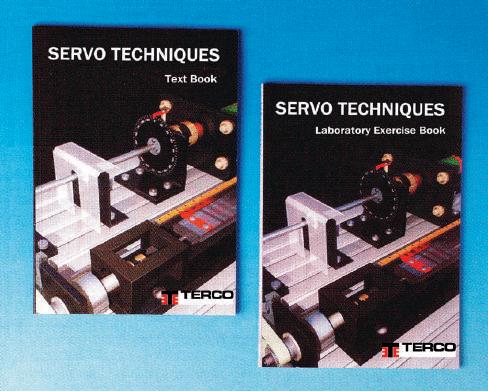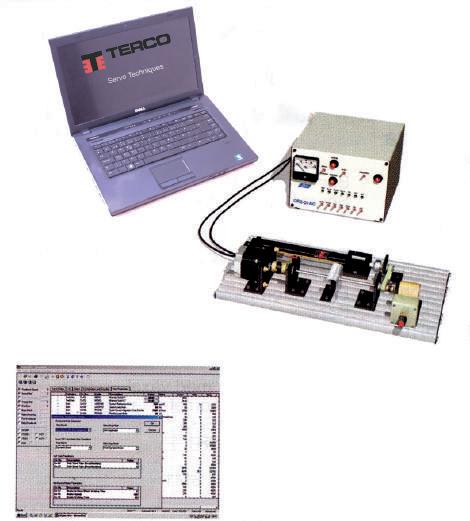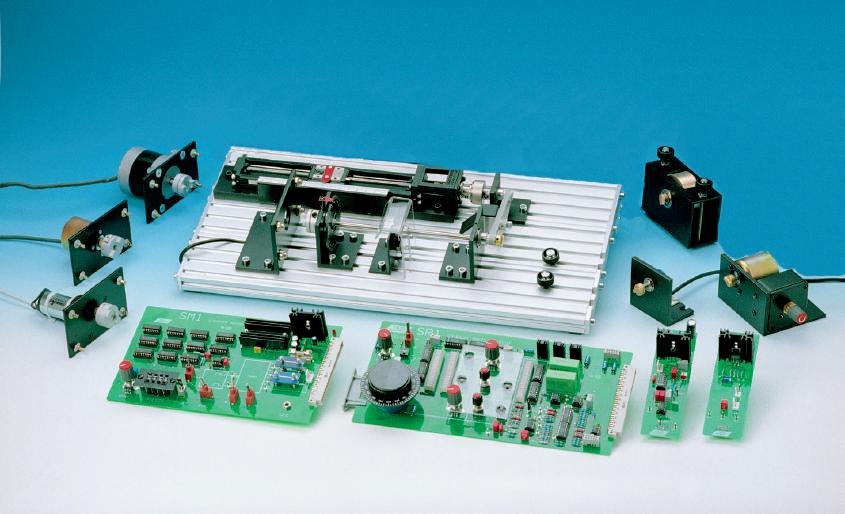
4 minute read
Servo Systems
from Terco Catalogue 2022
by terco-swe
This Servo Technique Set is an educational packet covering different types of servo motors and the associated electronics.
The experiments are carried out on a servo baseplate containing fixtures for the different motors having ball bearing screws for positioning. The different motors used, are DC stepper motors, AC and DC servo motors with relevant controls.
Advertisement
The control card is fitted to the Base Unit 2000. Servo motors are being used more and more in industry and are to a certain extent replacing both hydraulic and pneumatic. The Laboratory Exercise Book is easily understood with colour illustrations.
Basic Equipment
ELE102000 Base Unit 2000
The starting point of this laboratory system is Base Unit 2000, a control panel and PCB-holder.
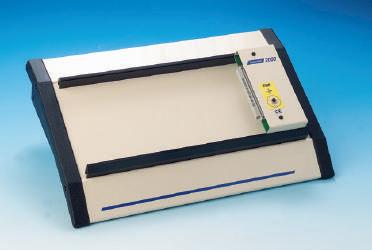
The Base Unit can be loaded with laboratory cards which have been carefully designed to suit each particular area of study.
The Lab Cards are placed in slots and are automatically powered via a D-sub connector.
General Data:
Supply voltage: 220 - 240 V 50-60Hz 1-phase.
The unit has 6 outputs with following data:
Outputs 1-3: DC 12V / 3A with LED indication and fuse.
Outputs 4-6: AC 24V / 3A with LED indication and fuse.
Dimension: 370 x 180 x 75 mm.
Weight: 4 kg
Other supply voltages available on request.
AUT302500 Servo Base Plate with Linear Unit
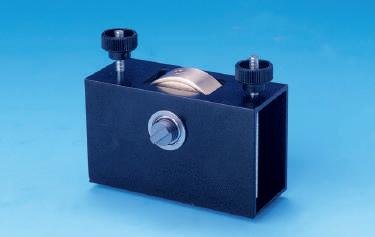
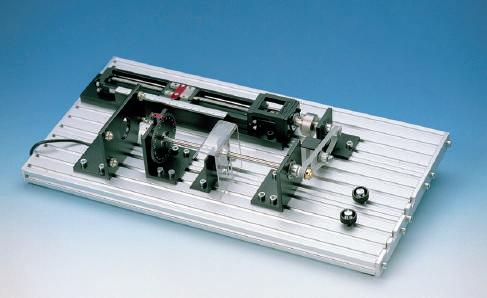
The Servo Base Plate consists of a hard, sprayed Aluminum profile. On the base plate a ball bearing supported axle is assembled. On the axle a disc, graduated from 0 to 360 degrees, is attached, also a code disc, that controls an optical encoder with 500 pulses per rotation. At one end of the axle, different types of motor can be attached. A Linear Unit, having a stroke length of 140 mm, is mounted on the base plate.
A millimetre scale showing 70-0-70 with an index on the travel carriage is also mounted on the base plate. The unit rises by 1mm/revolution, making it possible for good accuracy. The Linear Unit is equipped with a friction coupling.
Dimension: 420 x 240 x 100 mm,
Weight: 5 kg
DC-Speed Servo
AUT302502 DC Servo Motor without Gears
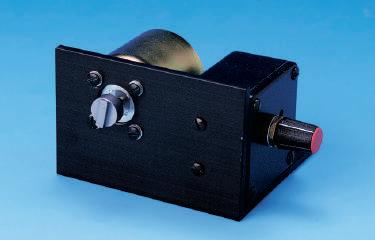
A DC Servo Motor for direct connection to a servo system. It is connected to the axle on the servo base plate. data:
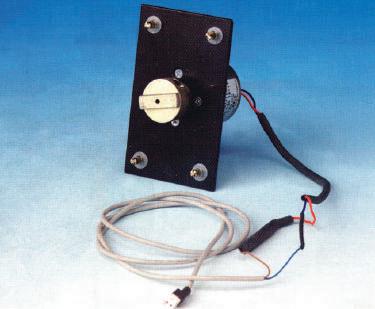
Nominal voltage 12 V
Nominal torque 10 Nmm
Nominal speed 2850 rpm
Input power 3.6 W
Dimension: 100 x 70 x 60 mm
Weight: 0.3 kg
AUT302504 Flywheel
The Servo System 2000 is loaded by connecting a Flywheel to the motor shaft by means of a shaft coupling. The flywheel weight excluding housing weighs 0.3kg.
General data:
Dimension: 100 x 40 x 60 mm
Weight: 0.4 kg
AUT302506 Generator Brake
For stepless adjustment of different loads, a Generator Brake is connected to the motor shaft. The brake action can be varied by means of a potentiometer.
General data:
Dimension: 110 x 90 x 60 mm.
Weight: 0.4 kg
AUT302508 SR1 Servo Regulator
The Servo Regulator lab card is connected to the Base Unit 2000. It is used to regulate the DC servo. SR3 positioning module is used for positioning and SR2 speed module for control of speed.
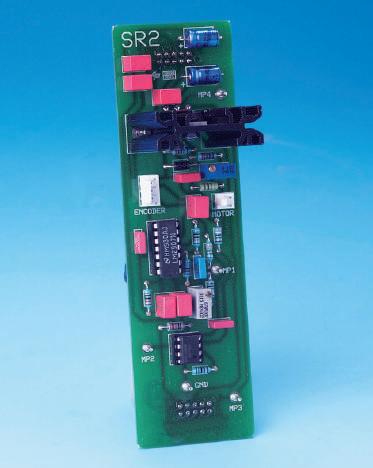

Dimension: 290 x 140 x 45 mm.
Weight: 0.4 kg
AUT302510 SR2 Speed Regulation Module
Used together with the SR1 Servo Regulation Module for speed control of the DC-Motor without gear. The SR2 Speed Regulation Module will be mounted on the SR1 Servo Regulator with two electrical connectors.
Dimension: 140 x 55 x 40 mm.
Weight: 0.1 kg
DC-Position Servo

AUT302512 DC Servo Motor with Gears
This item is used with the DC positioning servo (see page 8). It is a 12V DC servo motor with built-in gears for reducing the speed to the base plate axle.

General data:
Voltage 24 V
Power 4 W
Off load speed 5940 rpm
Max load Current 285 mA
Max torque 10.8 Nmm
Dimension: 110 x 100 x 60 mm
Weight: 0.3 kg
AUT302514 Process Value Module
The Process Value Module for the potentiometer, functions as an analogue positioning sensor. The moving parts follow the turn of the axle. The potentiometer has an operational angle of 360o . There is no stop and the potentiometer follows the axle, changing the resistance continually.
Dimension: 160 x 60 x 60 mm.
Weight: 0.1kg
AUT302516 SR3 Positioning Module
SR3 Positioning Module is an analogue positioning sensor which can be connected via a shaft coupling to the Servo Base Plate. It includes a potentiometer which follows the torsion of the shaft. The potentiometer is single wound with an electrical angle of 360º. The potentiometer has no end stop, and it accompanies the shaft, continuously changing it’s resistance.
Positioning Module SR3 is mounted on the Servo Regulator SR1.
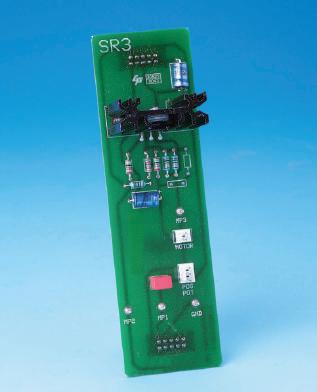
Dimension: 140 x 55 x 40 mm
Weight: 0.1 kg
AUT302518 Stepper Motor
The Stepper Motor is a brush-less DC motor with a rotor that can rotate to selected positions.
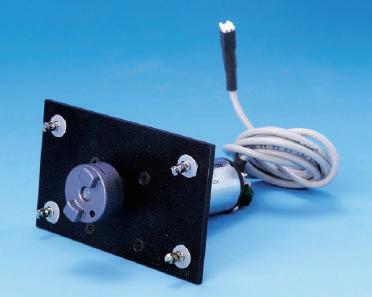
The motor can be made to move forwards or backwards and at different speeds with great accuracy by energising the motors different windings. The stepper motor is connected to the axle on the Servo Base Plate. It is regulated by the Stepper Motor Module SM1.
Dimension: 100 x 100 x 60 mm
Weight: 0.7 kg
AUT302520 Stepper Motor Module SM1
The Stepper Motor Module SM1 is connected to the Base Unit 2000 for regulation of the stepper motor, which is mounted on the Servo base plate.

Dimension: 240 x 140 x 50 mm
Weight: 0.2 kg
AC- Servo
AUT302522 AC Servo Motor
The AC Servo Motor is mounted on the motor bracket with four quick release wing nuts. It is coupled to the shaft of the servo system.The servo motor is connected to the AC servo amplifier.
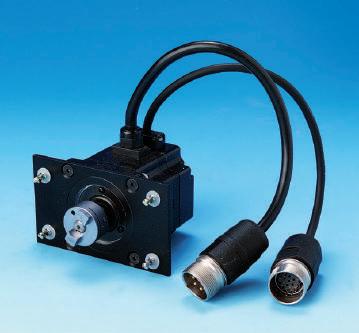
General data:
This AC Servo Motor has the following data:
Voltage 200 V
Current 0.9 A
Power 100 W
Speed 3000 rpm
Torque 0.3 Nm
Dimension: 90 x 100 x 60 mm
Weight: 0.8 kg
AUT302524 AC Servo Amplifier
The Amplifier contains a control unit, flash memory and a power amplifier. From the control unit there are many switches for the control of the servo system.
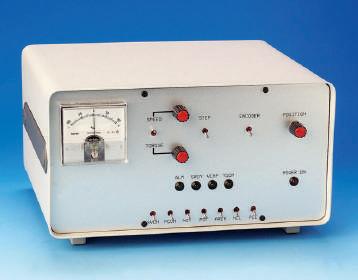
Connection to the PLC is at the back of the amplifier. The servo system can be programmed using a computer and then transferred to the flash memory in the amplifier.
Dimension: 290 x 260 x 170 mm
Weight: 5.3 kg
PRG302500 Programme Software

Sigma Win system 2000
Sigma Win is a software for programming AC servo´s. The program is based on Windows.
Programming software for the AC servo system. To make it easier to programme and analyse the servo system a windows based software is used.
Different systems can be tested, servo systems variables can be configured and the signal flow observed.
